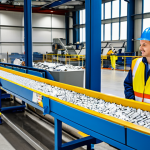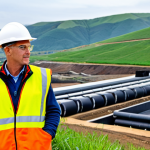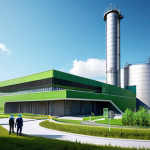Alright, let’s dive into the world of Waste Disposal Engineer certification! Preparing for the written exam can feel like climbing a mountain of regulations, technical jargon, and environmental science.
It’s a crucial step, though, toward a career that directly impacts our communities and the planet. From personal experience, tackling practice questions is the absolute best way to solidify your understanding and identify those areas where you need extra focus.
Plus, with increasing concerns about waste management and sustainability, the demand for skilled professionals is only going to grow, making this a really valuable certification.
So, ready to boost your chances of acing that exam? Let’s get to the bottom of this together in the article below!
Alright, let’s dive into the world of Waste Disposal Engineer certification! Preparing for the written exam can feel like climbing a mountain of regulations, technical jargon, and environmental science.
It’s a crucial step, though, toward a career that directly impacts our communities and the planet. From personal experience, tackling practice questions is the absolute best way to solidify your understanding and identify those areas where you need extra focus.
Plus, with increasing concerns about waste management and sustainability, the demand for skilled professionals is only going to grow, making this a really valuable certification.
So, ready to boost your chances of acing that exam? Let’s get to the bottom of this together in the article below!
Navigating the Regulatory Labyrinth: Understanding Key Legislation
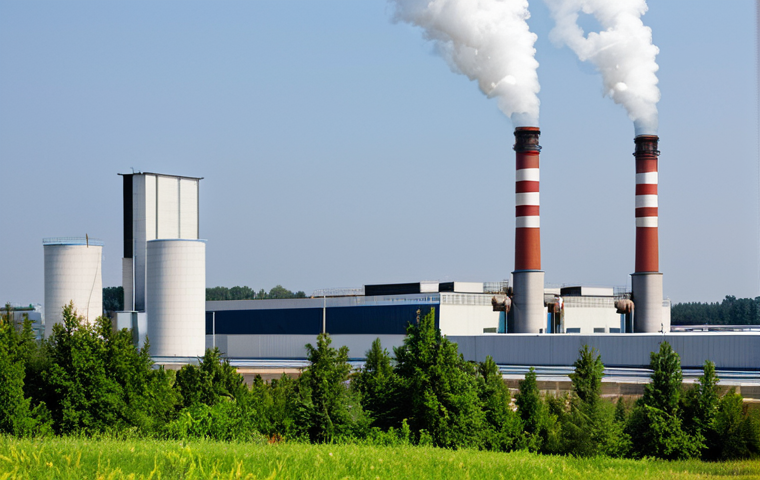
This part of the exam is like deciphering a secret code, but trust me, once you crack it, you’ll feel much more confident. Think of the regulations as the rules of the game – you can’t play effectively if you don’t know them.
It’s not just about memorizing names and dates; it’s about understanding the *why* behind the laws and how they affect waste management practices on a day-to-day basis.
I remember one project where we had to completely redesign our waste stream plan because of a recent change in EPA guidelines. Talk about a scramble! But it really hammered home the importance of staying up-to-date.
1. Delving into the Resource Conservation and Recovery Act (RCRA)
RCRA is the bedrock of solid and hazardous waste management in the US. You need to understand its core principles, including the cradle-to-grave approach for hazardous waste.
This means tracking hazardous materials from their generation to their final disposal. Pay close attention to the definitions of hazardous waste, the permitting requirements for treatment, storage, and disposal facilities (TSDFs), and the corrective action provisions.
If you’re studying, think about real-world examples – like a local manufacturing plant that generates hazardous waste. How do they comply with RCRA requirements?
What happens if they don’t?
2. Exploring the Comprehensive Environmental Response, Compensation, and Liability Act (CERCLA)
CERCLA, often referred to as Superfund, deals with cleaning up contaminated sites. The key here is understanding liability – who is responsible for paying for the cleanup of a Superfund site?
This can involve past and present owners, operators, generators, and transporters of hazardous substances. CERCLA also establishes a trust fund to finance cleanup activities when responsible parties cannot be identified or are unwilling to pay.
Imagine a scenario: an abandoned industrial site is found to be leaking toxic chemicals into the groundwater. Who is liable under CERCLA, and how would the cleanup process unfold?
This act has a huge impact on brownfield development and revitalization efforts across the country.
3. Understanding the Clean Air Act and Clean Water Act Implications
While not exclusively focused on waste disposal, these acts have significant implications for waste management practices. Landfills, for instance, can be a source of methane emissions, a potent greenhouse gas regulated under the Clean Air Act.
Wastewater treatment plants, which often handle leachate from landfills, are regulated under the Clean Water Act. Be prepared to discuss how waste management facilities comply with these regulations to minimize air and water pollution.
Think about the technologies used to capture landfill gas or treat wastewater before it is discharged back into the environment.
Mastering Waste Treatment Technologies: From Incineration to Anaerobic Digestion
Okay, this section can get pretty technical, but it’s also where things get really interesting! It’s all about understanding the different ways we can process and transform waste.
It’s not enough to just know the names of the technologies; you need to understand how they work, their advantages and disadvantages, and their suitability for different types of waste.
During an internship, I saw firsthand how a well-designed composting system could drastically reduce the amount of organic waste sent to landfills, while producing a valuable soil amendment.
1. Deciphering Incineration Processes and Air Pollution Control
Incineration involves burning waste at high temperatures to reduce its volume and generate energy. However, it also poses a risk of air pollution, so it’s crucial to understand the air pollution control technologies used to minimize emissions.
These can include scrubbers, filters, and electrostatic precipitators. Know the types of pollutants that are typically emitted from incinerators (e.g., particulate matter, sulfur dioxide, nitrogen oxides, dioxins, and furans) and how each control technology works to remove them.
Also, understand the different types of incineration systems, such as mass burn and modular incinerators.
2. Examining Landfill Design and Leachate Management
Modern landfills are far more sophisticated than the old dumps of the past. They are engineered to contain waste and prevent contamination of the surrounding environment.
Key design features include liners, leachate collection systems, and gas collection systems. Leachate is the liquid that percolates through the waste and can contain a variety of pollutants.
Understand how leachate is collected, treated, and disposed of. Also, be familiar with the different types of landfill liners (e.g., clay, geomembranes) and their properties.
The most advanced landfills even capture methane gas, which can be used to generate electricity.
3. Understanding Composting and Anaerobic Digestion
Composting and anaerobic digestion are biological treatment processes that break down organic waste. Composting is an aerobic process that requires oxygen, while anaerobic digestion occurs in the absence of oxygen.
Both processes produce valuable products, such as compost (a soil amendment) and biogas (a renewable energy source). Understand the factors that affect the performance of these processes, such as temperature, moisture content, and carbon-to-nitrogen ratio.
Think about the types of waste that are best suited for composting or anaerobic digestion (e.g., food scraps, yard waste, manure).
Assessing Environmental Impact: Performing a Life Cycle Assessment (LCA)
This section is like putting on your detective hat and tracing the environmental footprint of a product or process from cradle to grave. It’s a powerful tool for identifying opportunities to reduce environmental impacts and promote sustainability.
LCAs can be complex, but the basic principles are straightforward. I once used an LCA to compare the environmental impacts of different types of packaging, and the results were eye-opening.
It really showed me how seemingly small choices can have a big impact.
1. Defining the Scope and Goal of an LCA
The first step in conducting an LCA is to define the scope and goal of the study. This involves specifying the product or process being evaluated, the functional unit (e.g., the amount of waste processed), and the system boundaries.
The system boundaries define which processes are included in the analysis. For example, if you are evaluating the environmental impacts of a landfill, would you include the impacts of transporting the waste to the landfill?
The goal of the study should be clearly stated (e.g., to compare the environmental impacts of different waste treatment options).
2. Conducting an Inventory Analysis: Data Collection
The inventory analysis involves collecting data on all the inputs and outputs associated with the product or process being evaluated. This can include raw materials, energy, water, air emissions, and solid waste.
Data collection can be time-consuming and challenging, but it is essential for obtaining accurate results. There are several databases available that provide data on the environmental impacts of different materials and processes.
Imagine you are conducting an LCA on a plastic water bottle. What data would you need to collect?
3. Interpreting and Reporting LCA Results
The final step in an LCA is to interpret and report the results. This involves analyzing the data to identify the most significant environmental impacts and drawing conclusions about the overall environmental performance of the product or process.
The results should be clearly and concisely presented, and the limitations of the study should be acknowledged. LCA results can be used to inform decision-making and promote more sustainable practices.
Ensuring Workplace Safety: Implementing Effective Safety Protocols
Safety is paramount in the waste management industry. Workers face a variety of hazards, including exposure to hazardous materials, heavy equipment, and confined spaces.
It is essential to implement effective safety protocols to protect workers and prevent accidents. I remember a safety training session where we learned about the potential dangers of working around landfills.
It really emphasized the importance of following safety procedures and wearing personal protective equipment.
1. Hazard Identification and Risk Assessment
The first step in ensuring workplace safety is to identify potential hazards and assess the associated risks. This involves conducting regular workplace inspections, reviewing accident reports, and soliciting feedback from workers.
Once hazards have been identified, the risks should be assessed based on their severity and likelihood of occurrence. This information can be used to prioritize safety measures and develop appropriate control strategies.
2. Personal Protective Equipment (PPE) and Training
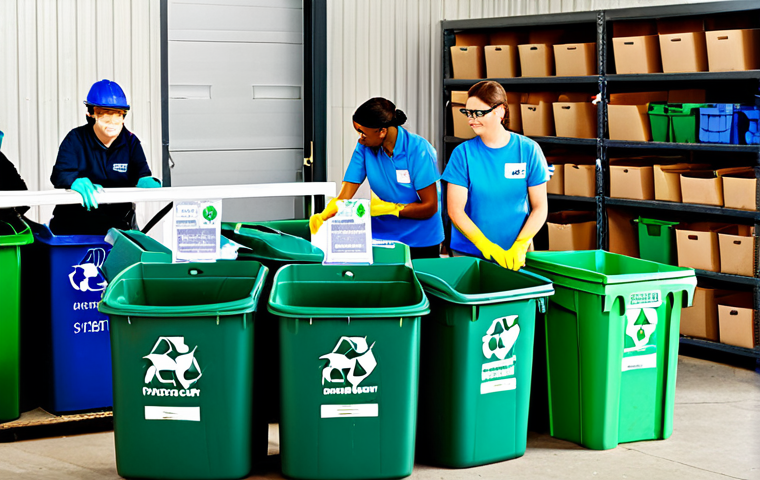
Personal protective equipment (PPE) is essential for protecting workers from hazards. PPE can include respirators, gloves, eye protection, hearing protection, and protective clothing.
Workers should be properly trained on how to use and maintain PPE. Training should also cover hazard recognition, safe work practices, and emergency procedures.
Regular refresher training should be provided to ensure that workers stay up-to-date on safety protocols.
3. Emergency Response Planning
Emergency response planning is crucial for minimizing the impact of accidents and incidents. Emergency response plans should outline procedures for dealing with fires, spills, injuries, and other emergencies.
Workers should be trained on their roles and responsibilities in an emergency. Emergency drills should be conducted regularly to test the effectiveness of the plan.
Waste Reduction and Recycling Strategies: Embracing the Circular Economy
This section is all about moving away from the traditional linear economy (take-make-dispose) and towards a circular economy, where resources are kept in use for as long as possible.
Waste reduction and recycling are key components of a circular economy. It’s not just about feeling good about recycling; it’s about creating economic opportunities and reducing environmental impacts.
1. Source Reduction and Waste Minimization Techniques
Source reduction involves reducing the amount of waste generated in the first place. This can be achieved through a variety of techniques, such as product redesign, material substitution, and process optimization.
Waste minimization focuses on reducing the amount of waste that needs to be treated or disposed of. This can involve implementing better inventory management practices, reusing materials, and composting organic waste.
2. Recycling Technologies and Market Development
Recycling involves collecting and processing waste materials into new products. There are a variety of recycling technologies available for different materials, such as plastics, metals, paper, and glass.
The success of recycling depends on the development of strong markets for recycled materials. This requires collaboration between manufacturers, recyclers, and consumers.
3. Extended Producer Responsibility (EPR) Programs
Extended Producer Responsibility (EPR) programs hold producers responsible for the end-of-life management of their products. This can incentivize producers to design products that are easier to recycle or reuse.
EPR programs can also help to finance recycling infrastructure and promote market development for recycled materials.
| Waste Management Area | Key Regulations | Associated Technologies | Potential Hazards |
|---|---|---|---|
| Landfill Management | RCRA Subtitle D, State regulations | Liner systems, leachate collection, gas recovery | Methane emissions, groundwater contamination |
| Incineration | Clean Air Act, local air quality permits | Air pollution control devices, waste-to-energy systems | Airborne pollutants, ash disposal |
| Wastewater Treatment | Clean Water Act, NPDES permits | Activated sludge, filtration, disinfection | Chemical exposure, pathogens |
| Composting | State composting regulations | Windrow composting, in-vessel composting | Odor control, pathogen management |
| Recycling | Local recycling ordinances | Material recovery facilities (MRFs) | Equipment-related injuries, contamination |
Site Remediation Techniques: Cleaning Up Contaminated Land
Cleaning up contaminated land is crucial for protecting human health and the environment. This section covers the different techniques used to remediate contaminated sites, from excavation and disposal to in-situ treatment methods.
It’s a complex field that requires a thorough understanding of environmental science, engineering, and regulatory requirements.
1. Excavation and Disposal
Excavation and disposal involves removing contaminated soil and transporting it to a landfill or treatment facility. This is a common remediation technique, but it can be expensive and disruptive.
It is typically used when the contamination is concentrated in a relatively small area and the soil is easily accessible.
2. In-Situ Treatment Methods
In-situ treatment methods involve treating the contamination in place, without removing the soil. This can be a more cost-effective and less disruptive option than excavation and disposal.
Examples of in-situ treatment methods include soil vapor extraction, air sparging, and bioremediation.
3. Monitoring and Long-Term Management
Monitoring and long-term management are essential for ensuring the effectiveness of remediation efforts. Monitoring involves regularly sampling and analyzing soil and groundwater to track the progress of the cleanup.
Long-term management may be required to prevent the spread of contamination or to address residual contamination.
Wrapping Up
So, there you have it! Preparing for the Waste Disposal Engineer certification is no walk in the park, but with a solid grasp of regulations, technologies, environmental impact assessment, safety protocols, and waste reduction strategies, you’ll be well on your way to success. Remember to tailor your studies to your specific career goals and to stay up-to-date on the latest industry trends. Good luck with your exam!
Useful Information
1. Check out the SWANA (Solid Waste Association of North America) website for study materials and exam information.
2. Network with other waste management professionals through industry events and online forums.
3. Consider joining a local chapter of a professional organization, such as the American Society of Civil Engineers (ASCE).
4. Look for internships or volunteer opportunities to gain practical experience in the field.
5. Subscribe to industry publications and journals to stay informed about the latest developments.
Key Takeaways
• Regulations: Master RCRA, CERCLA, Clean Air Act, and Clean Water Act.
• Technologies: Understand incineration, landfill design, composting, and anaerobic digestion.
• Environmental Impact: Conduct life cycle assessments (LCAs) to evaluate environmental impacts.
• Safety: Implement effective safety protocols to protect workers.
• Waste Reduction: Embrace the circular economy and promote waste reduction and recycling.
Frequently Asked Questions (FAQ) 📖
Q: What kind of background or experience do I typically need before even considering a Waste Disposal Engineer certification?
A: Honestly, most certifying bodies look for a solid foundation, typically a bachelor’s degree in environmental engineering, civil engineering, or a closely related field.
From what I’ve seen, having some hands-on experience – maybe through internships or entry-level positions in waste management facilities or environmental consulting firms – really sets you up for success in both the exam and the field itself.
It’s one thing to understand the theory, but another to know how it all works on the ground. Think about it this way: knowing the chemistry of landfill leachate is helpful, but actually dealing with it day-to-day gives you a whole other level of practical knowledge!
Q: What are the main topics or areas of knowledge covered in the Waste Disposal Engineer certification exam?
A: Okay, so buckle up, because the exam covers a broad range of topics. I’m talking regulations (like the Resource Conservation and Recovery Act, or RCRA), waste treatment technologies (incineration, composting, anaerobic digestion, you name it!), landfill design and operation (leachate management, gas collection, the whole shebang), environmental impact assessment, and even some project management principles.
When I prepped, I realized I needed to brush up on my chemistry and biology too, especially when it came to understanding how different waste streams interact and break down.
Oh, and don’t forget about safety protocols!
Q: What are some of the best resources or study strategies for preparing for the Waste Disposal Engineer certification exam?
A: From my own experience, a multi-pronged approach works best. Start by getting your hands on the official study guide from the certifying organization – that’s your bible!
Then, hit the textbooks and technical manuals relevant to waste management and environmental engineering. Practice exams are GOLD. Seriously, the more you do, the better you’ll get at recognizing question patterns and managing your time.
I also found it helpful to join online forums or study groups with other aspiring engineers. Bouncing ideas off of others and hearing their perspectives can be incredibly valuable.
And hey, if you can swing it, attending a prep course led by experienced professionals can give you a structured overview and targeted practice. Trust me, putting in the time and effort will definitely pay off!
📚 References
Wikipedia Encyclopedia
구글 검색 결과
구글 검색 결과
구글 검색 결과
구글 검색 결과
구글 검색 결과

